Stretches After Bike Ride for Seniors – Get Flexible Now
Are you an active senior who loves to bike? Or have you recently taken up cycling as a way to get exercise and explore the outdoors, like me?
Whatever your reason is for hopping on your bike – if you’re over 60 then adding a stretching routine after your ride is something you may want to consider.
Just like it’s necessary to warm up before any activity, stretches after a bike ride can ensure that your body continues to feel as good as possible after you finish your rides.
Often times I would forget (or just plain blow off) stretching after a bike ride – especially if I was in a hurry or feeling tired.
But now I’ve learned the importance of taking time for stretches after cycling – with age comes knowledge!
Just taking a few minutes to stretch have made a big difference in how I felt both during and after my rides.
In this article, I’ll be sharing some of my favorite stretches to do after a bike ride, as well as some tips for making stretching a regular part of your cycling routine.
So, whether you’re a seasoned cyclist or just starting out, keep reading to learn more about the benefits of stretching and how to do it effectively.
This post contains affiliate links. As an Amazon Associate, I earn from qualifying purchases. This means I may earn a commission, at no extra cost to you, should you choose to make a purchase using my link.
Stretching Basics
As a cyclist, I can tell you that stretching after bike ride can be a total game changer!
Stretching helps prevent injuries and muscle soreness, and it also improves flexibility.
Here are a few basic things to think about when it comes to stretching after a bike ride.
Types of Stretches After Bike Ride
There are many different types of stretches you can do after a bike ride.
Some of the most common stretches include:
- Quad stretch: This stretch targets the quadriceps, the large muscles at the front of your thighs.
- Hamstring stretch: This stretch targets the hamstrings, the muscles at the back of your thighs.
- Glute stretch: This stretch targets the glutes, the muscles in your buttocks.
- Piriformis stretch: This stretch targets the piriformis muscle, which is located in the buttocks and can cause sciatic pain if it becomes tight.
- Calf stretch: This stretch targets the calf muscles, which are located at the back of your lower legs.
- Hip flexor stretch: This stretch targets the hip flexors, which are the muscles that allow you to lift your knees and bend at the waist.
- Shoulder stretch: This stretch targets the shoulders, which can become tight from being hunched over the handlebars.
How Long to Stretch
When it comes to stretching, it’s important to hold each stretch for at least 30 seconds.
This gives your muscles enough time to relax and lengthen.
If you can hold a stretch for longer, that’s even better. Just be sure not to overdo it and cause injury.
When to Stretch
The best time to stretch is after a bike ride, when your muscles are warm and flexible – and before you get busy and forget or talk yourself out of doing it all together.
It’s also a good idea to stretch before a ride to help prevent injuries.
If you’re short on time, try to at least stretch your legs and hips, because these are the areas that can become super tight from cycling.
It doesn’t have to be anything fancy – just some basic stretches to keep your muscles happy.
And we all want our muscles happy – especially as we age! We have enough aches and pains, no one wants to add more to that list!
You definitely don’t want to be that person that can’t walk the next day just because you didn’t stretch.
A Few Of My Favorite Stretches
When it comes to cool down stretches after riding, it’s important to focus on all the right areas.
Here are a few of the targeted stretches that I like to do after my rides.
Hip Flexors
Cycling can cause tightness in your hip flexors, so it’s important to stretch them out after a ride.
Here’s how:
- Start by kneeling on the ground with your left knee on the floor and your right foot in front of you.
- Place your hands on your right knee and lean forward, keeping your back straight.
- You should feel a stretch in your left hip flexor.
- Hold the stretch for 30 seconds and then switch sides.
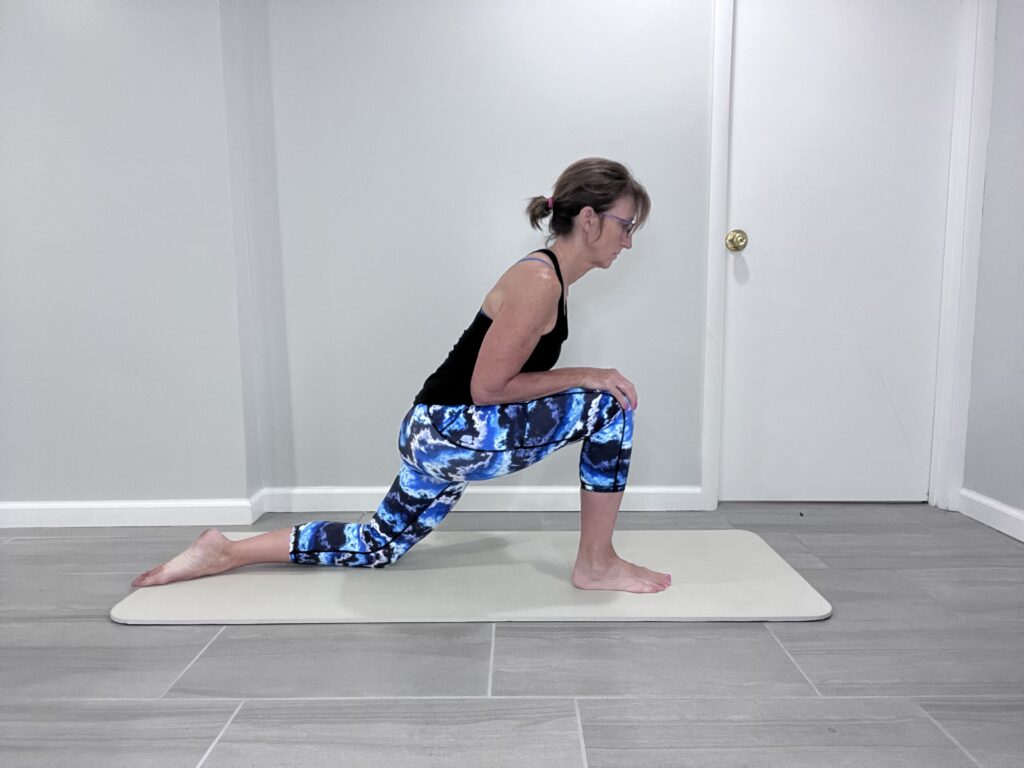
Quads and Hamstrings
Your quads and hamstrings are also important muscles to stretch after a bike ride.
Here’s how:
- Stand with your feet hip-width apart.
- Lift your left foot up behind you and grab your ankle with your left hand.
- Pull your heel towards your buttocks to stretch your quad.
- Hold the stretch for 30 seconds and then switch sides.
- To stretch your hamstrings, sit on the ground with your legs straight out in front of you.
- Reach forward and try to touch your toes.
- Hold the stretch for 30 seconds.
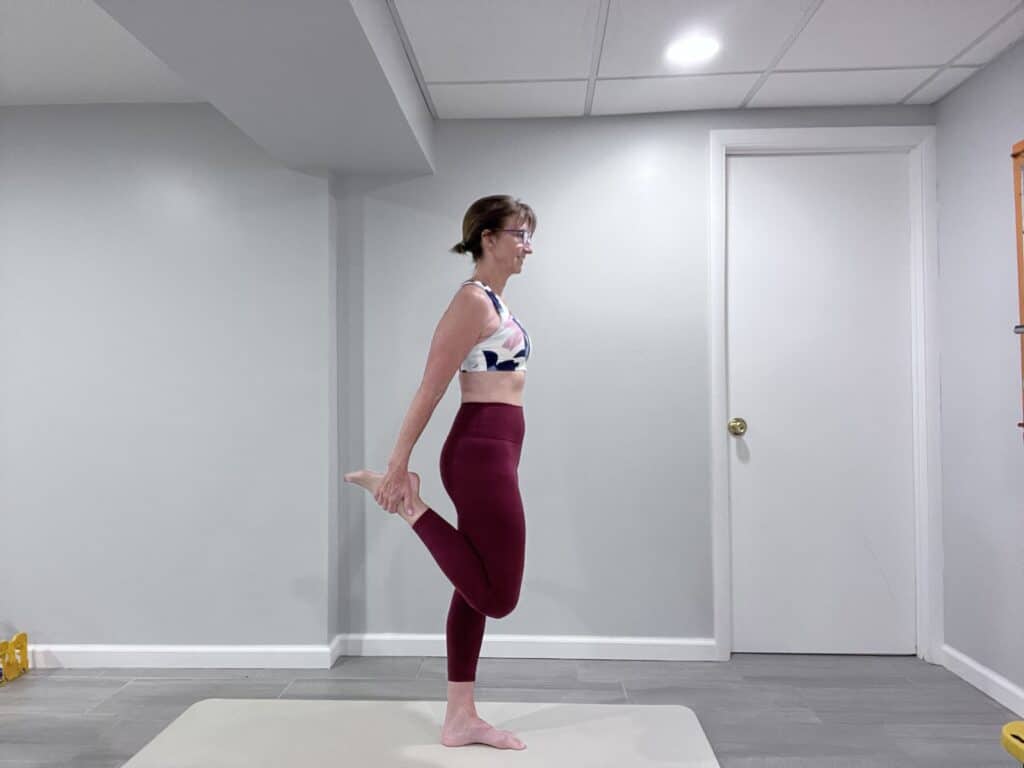
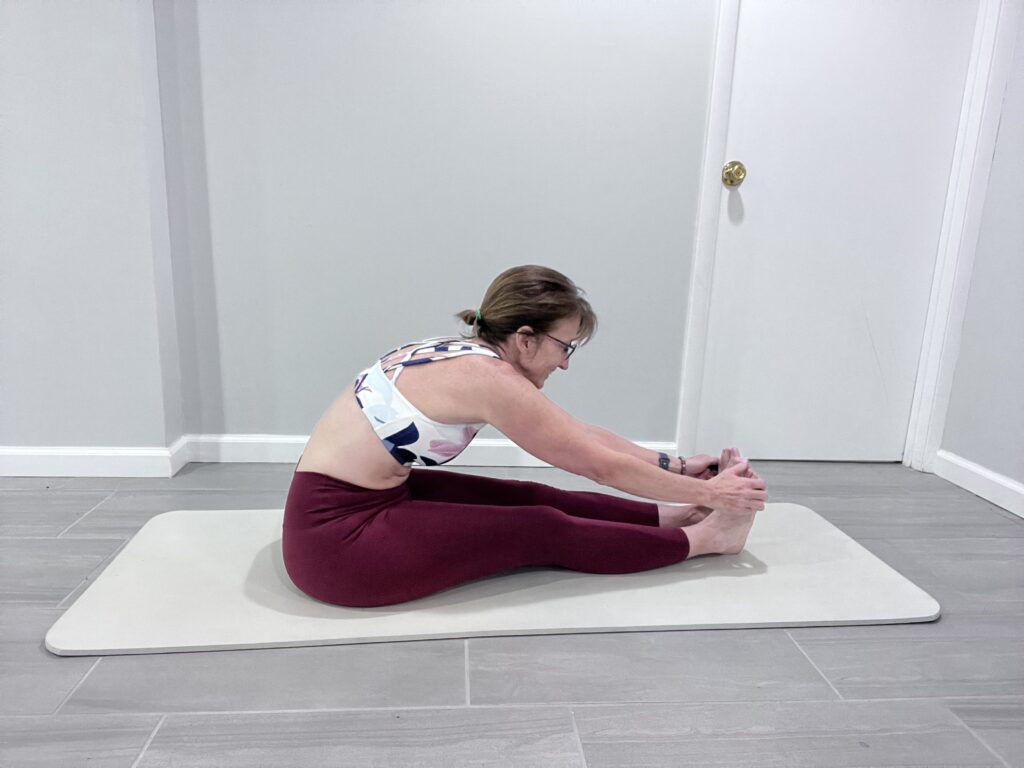
Calves and Ankles
Finally, it’s important to stretch out your calves and ankles after a bike ride.
Here’s how:
- Stand facing a wall with your hands on the wall at shoulder height.
- Step your left foot back and press your heel into the ground.
- You should feel a stretch in your right calf.
- Hold the stretch for 30 seconds and then switch sides.
- To stretch your ankles, sit on the ground with your legs straight out in front of you.
- Cross your right ankle over your left knee.
- Use your hands to gently push down on your right knee, stretching your ankle.
- Hold the stretch for 30 seconds and then switch sides.
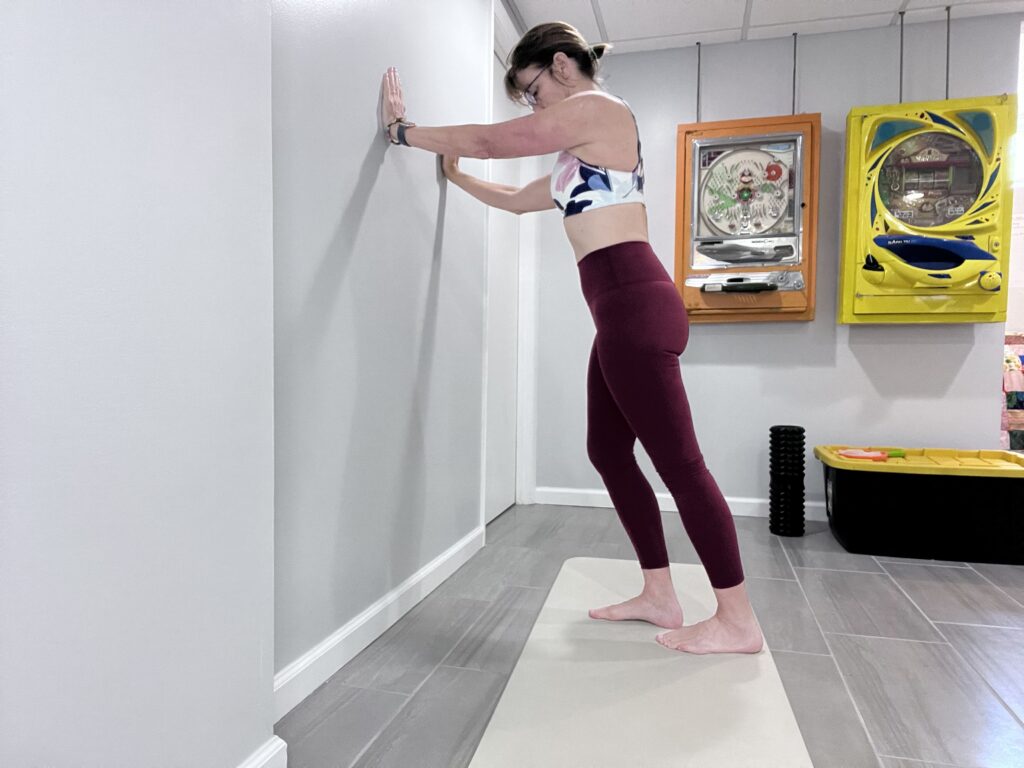
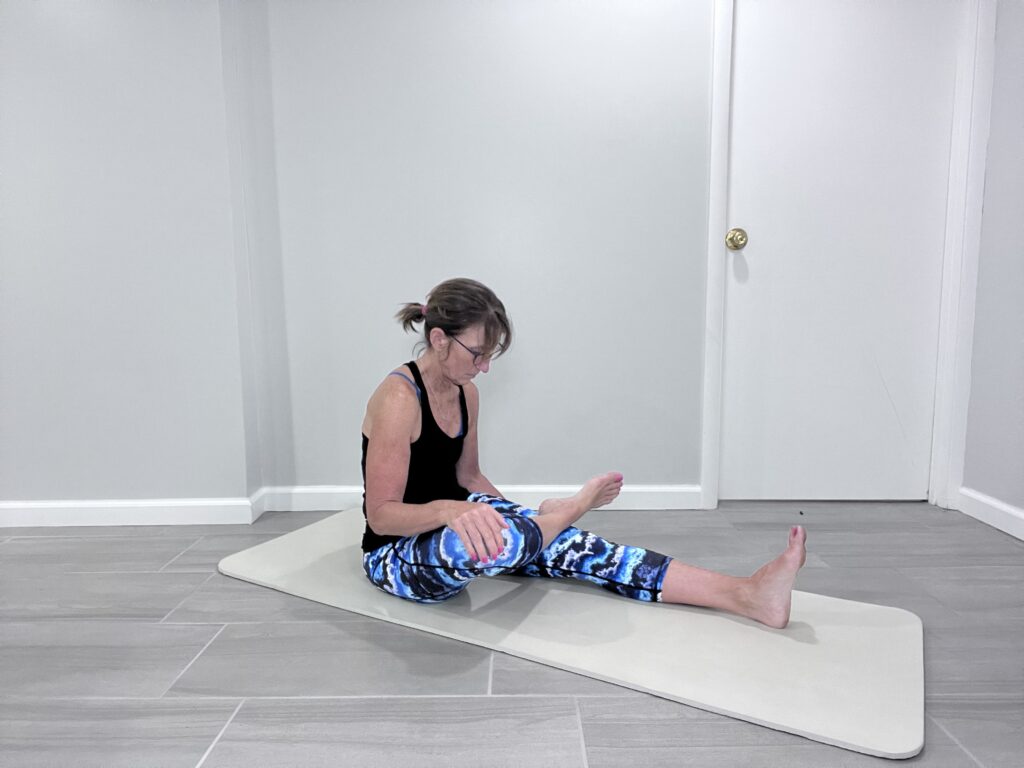
Additional Stretches
In addition to the stretches that I already mentioned, there are a few more stretches that I like to do to target specific areas when I have more time.
Piriformis Stretch
The piriformis is a small muscle located deep in the buttocks.
When this muscle gets tight it can me a real pain in the tushi!
It can cause pain or discomfort not only in your butt but can also radiate to your hip and low back – especially when you spend a lot of time on your seat.
To loosen this muscle, I like to do this stretch:
- Sit on the ground with your legs straight out in front of you.
- Cross your left ankle over your right knee.
- Gently pull your right knee towards your chest until you feel a stretch in your left buttock.
- Hold for 30 seconds, then switch sides.
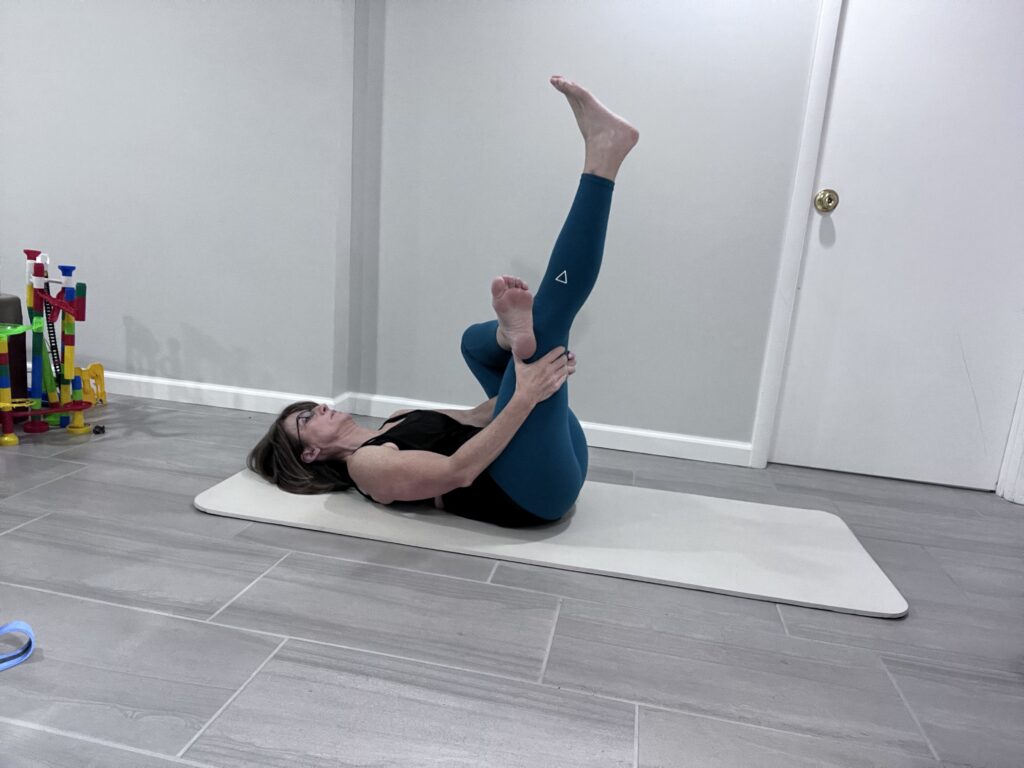
Pigeon Pose
Pigeon pose is a yoga pose that stretches out your hips and glutes.
I often have a love/hate relationship with this stretch when my muscles are tight!
Here’s how to do it:
- Start on all fours with your hands and knees on the ground.
- Bring your right knee forward and place it behind your right wrist.
- Extend your left leg behind you, keeping your hips square.
- Lower your body down to the ground, using your arms to support you.
- Hold for 30 seconds, then switch sides.
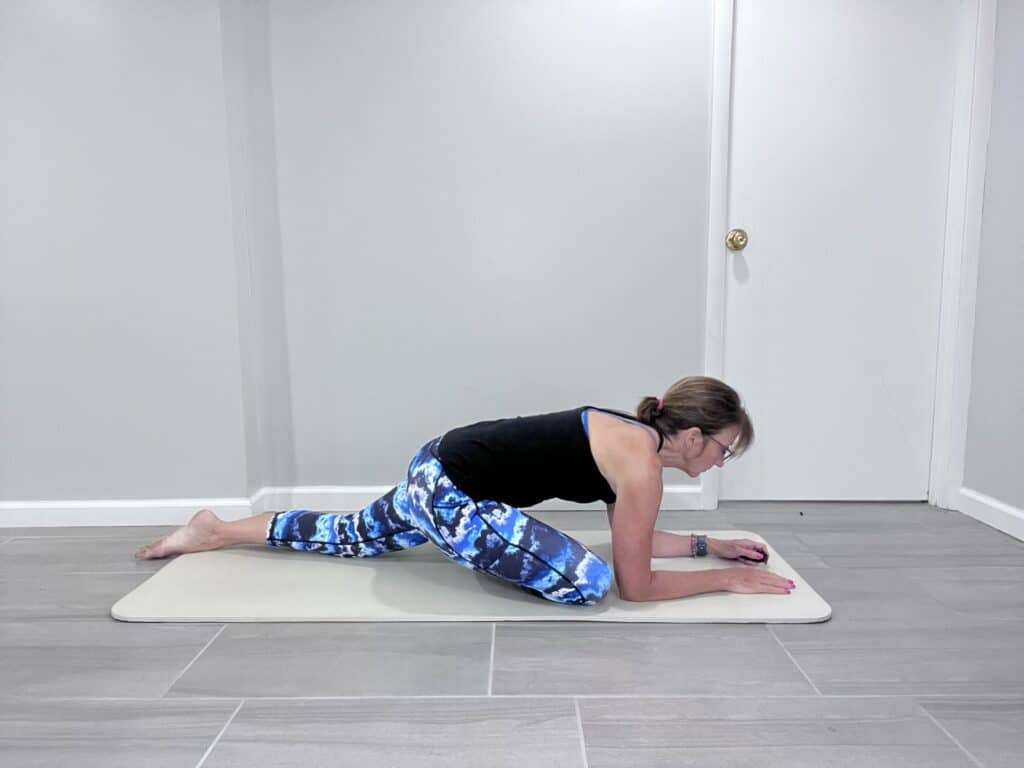
As you can see I’m not as flexible as I would like to be – but I do find that the more I do the stretches the more flexible I am becoming.
You could also include other yoga poses in your stretching routine since yoga is so helpful with flexibility, balance, and core strength – you know all of those things that help you be a better rider.
Some of my favorites are downward facing dog for my legs and shoulders; upward facing dog for my low back; happy baby pose for my hips; plank for my core and child’s pose to stretch my arms, shoulders and legs.
Just remember to listen to your body and only stretch to the point of mild discomfort, never pain.
Add Stretching into Your Regular Routine
Stretching doesn’t have to be limited to post-ride routines. Adding stretching exercises into your regular routine can help prevent injuries and improve flexibility.
Here are some tips for incorporating stretching into your daily routine:
- Stretch in the morning: Start your day off with a few stretches to wake up your muscles and get your blood flowing. This can help prevent injuries throughout the day.
- Stretch at work: If you have a desk job, take a break every hour or so to stretch your muscles. This can help prevent stiffness and soreness.
- Stretch before bed: End your day with some gentle stretches to help you relax and prepare for sleep.
Remember to always listen to your body and never push yourself too hard when stretching.
If you feel pain or discomfort, stop the stretch and try something else.
Preventing Injury and Discomfort
As someone who has just started to embrace stretching after my rides – I am learning how important it is to take care of my body after a ride.
Stretching is a crucial part of that, and it can help prevent injury and discomfort.
The Importance of Stretching for Injury Prevention
Stretching after a ride can help prevent injury by reducing muscle tension and increasing flexibility.
When we cycle, we put pressure on our muscles and joints, which can lead to soreness and stiffness.
Stretching helps alleviate that pressure and can also improve our range of motion, making it less likely that we’ll strain a muscle or joint during our next ride.
How Stretching Can Help with Common Cycling Injuries
Cycling can cause a variety of injuries, from neck pain to low back pain.
Stretching can help decrease some of the symptoms of these injuries and can also help prevent them from occurring in the first place.
For example, stretching the calves can help prevent Achilles tendonitis, which is a common cycling injury.
Also, stretching the hip flexors can help prevent lower back pain, which is another common issue for cyclists.
Tips for Stretching Safely
While stretching is important, it’s also important to do it safely. Here are some tips to keep in mind:
- Hold the stretch for at least 30 seconds to get the full benefit.
- Don’t bounce or force the stretch. Instead, ease into it gradually.
- Don’t overdo it. Stretching should feel good, not painful.
- Focus on the areas that feel tight or sore, but don’t neglect the rest of your body.
- Use props like foam rollers or yoga blocks to help you get into certain positions. In this article I go into foam rolling more – Stretching or Foam Rolling Which is Best
- Remember to breathe deeply and relax into the stretch.
By following these tips, your post-ride stretching routine should be safe and effective.
So next time you finish a ride, take a few minutes to stretch and give your body the care it deserves.
Conclusion
After a long bike ride, it’s so important to properly stretch to avoid soreness and prevent injury.
As a rider, I know how important it is to take care of my body to maintain my performance and endurance.
Through my research and personal experience, I have found that stretching after a ride can improve power and force, increase range of motion, and promote healthy recovery.
Remember to stretch all major muscle groups, hold each stretch for at least 30 seconds, and breathe deeply throughout the stretch.
By incorporating stretching into your post-ride routine, you can help prevent injury and improve your overall riding experience.
